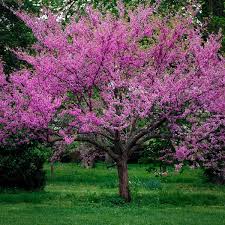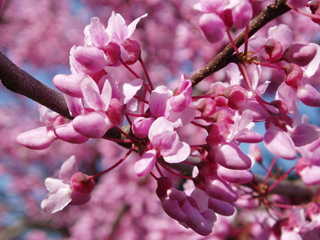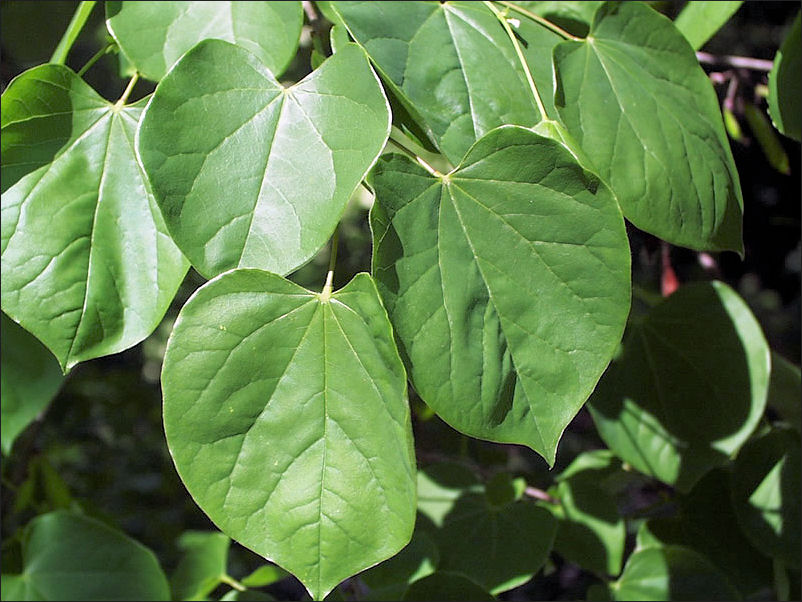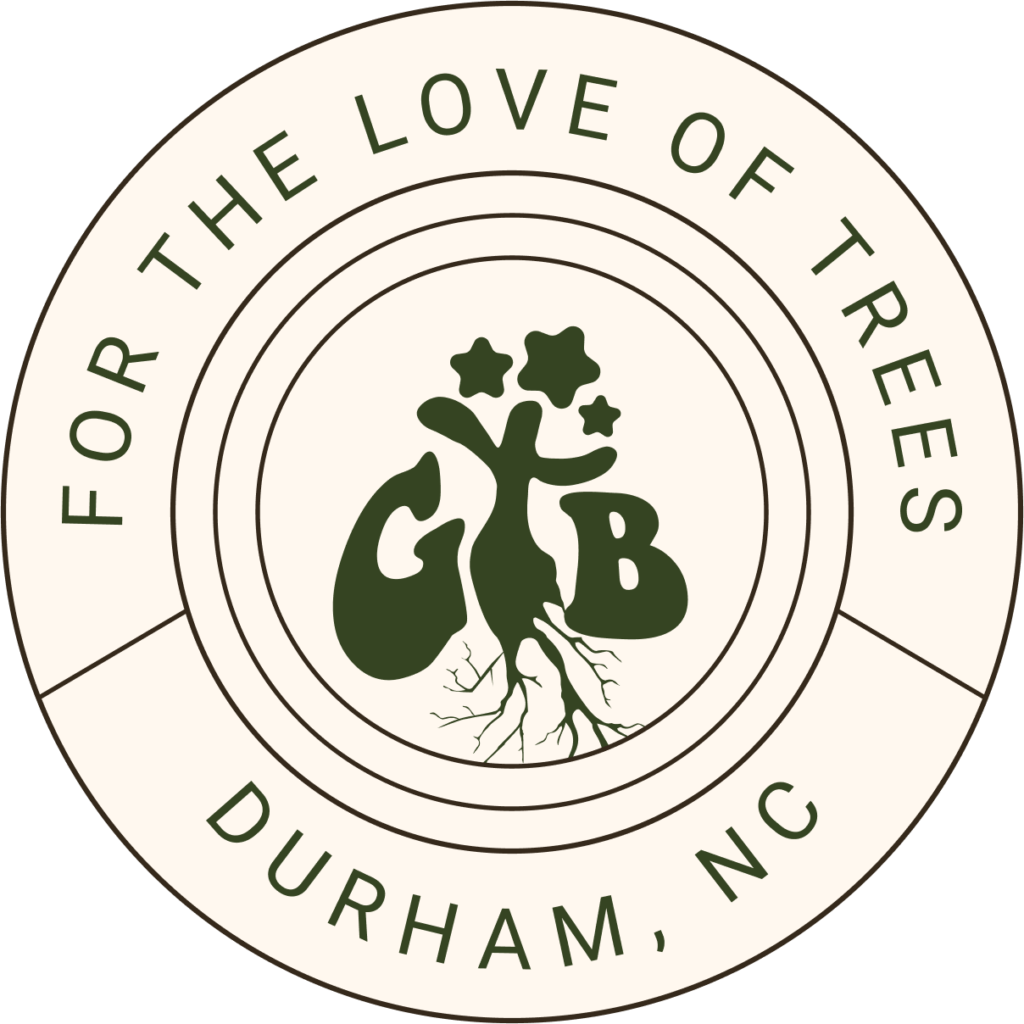Through the Grateful Trees and Bees Meet Your North Carolina Native Trees blog series, we’ll introduce you to the native trees we consider our friends.*

Cercis canadensis
Common Name: Eastern Redbud, Redbud
Native Range: Eastern North America from Southern Ontario, Canada to Northern Florida
Zone: 4 to 9
Height @ 10 years: 16-feet
Height @ Maturity: 20 to 30-feet
Spread: 26 to 33-feet
Blooms: March- May
Sun: Partial shade
Water: Medium water, well drained
Maintenance: Pruning helps develop a strong structure
Tolerates: Variety of soils PH 7.5 or above
Suggested Use: Wildlife food/shelter, ornamental and healing properties
Why We Love Redbud
Eastern redbud, with its glorious pink to reddish purple flowers, is one of the first and most beautiful signs of Spring in North Carolina. Blooming from March to May, it is one of the first trees to flower, even before its leaf growth has begun for the season because the flowers emerge directly from the trunk and branches. Flowers are followed by heart shaped leaves and then by dangling seed pods. The tree’s beauty is accentuated by a trunk that often divides close to the ground (called a multi-stemmed redbud) and unique branching patterns lifting up and spreading into a flat topped crown.

This native species grows well in North Carolina, and is usually found as an understory tree in mixed forests either scattered solo or in small grouped populations. It is often found in ravines or along woodland streams where it can find a bit of dappled sunshine. While it prefers moist sandy soil or loam (a fertile soil of clay and sand containing humus) and partial sun, it has been found to be adaptable to many conditions, including Piedmont clay, drought and full sun.
The early blossoms attract nectar-seeking wildlife, including bees, hummingbirds, and several species of butterflies. It can provide nesting sites, nesting material and seeds for birds, and can provide shelter for other mammals. The flowers are edible by humans and wildlife, and make a colorful, vitamin C-rich addition to Spring salads.
Adding to its favorable features, this tree also has a history of being used by Native Americans for its healing properties. A tea made from the inner bark is highly astringent and can be used in the treatment of fevers, diarrhea and dysentery and is even cited as a folk remedy for leukemia. A cold infusion of the roots and inner bark can be used to treat various chest complaints including whooping cough and congestion.

Redbud is sometimes called a “Judas tree,” so named because it was on a redbud that Judas hung himself after betraying Jesus. The old stories say that this is why red buds are among the first to bloom in the spring, coinciding with the death and resurrection of Jesus and followed by dangling seed pods that represent Judas’ hanging body and heart shaped leaves that speak of the Law of Love. The stories also posit that after Judas, God caused the redbud’s branches to be thinner so that they could never again support the weight of a full grown human body.
Regardless of your belief in the old stories, redbud’s beautiful aesthetic, usefulness and adaptability make it an excellent choice for home planting in North Carolina.
*At Grateful Trees and Bees we hold a special gratitude for the many tree species native to North Carolina. Natives are species that have survived thousands of years of the climate conditions, pests and diseases found in our region. Their adaptations make them perfect for tree plantings and tree establishment projects because they are likely to thrive locally with minimal intervention. They provide the food and shelter that local wildlife has come to depend on; and they exhibit the beautiful foliage, flowers and bark you are familiar with seeing in your landscape.
© 2017 Grateful Trees & Bees.

